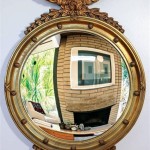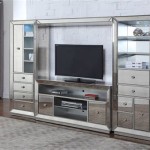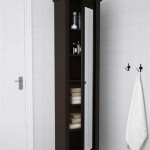Can I Use a Mirror to Reflect Sunlight for Plants?
Sunlight is essential for plant growth, providing the energy they need for photosynthesis. However, not all plants have access to sufficient direct sunlight, especially in indoor environments or shaded areas outdoors. This has led some gardeners to explore using mirrors to reflect sunlight onto their plants, hoping to boost their growth and health. While the concept seems plausible, the effectiveness of this method is nuanced and depends on several factors.
Understanding How Mirrors Reflect Light
Mirrors are reflective surfaces that bounce light back in a predictable way. When light strikes a mirror, it reflects at the same angle at which it hit the surface. This principle of reflection allows mirrors to concentrate light, directing it towards a specific target. In the context of plants, the idea is to use mirrors to reflect sunlight onto the leaves, increasing the amount of light they receive.
Factors Affecting the Effectiveness of Mirror Reflection
The success of using mirrors to enhance plant growth depends on several factors, including:
1. The Intensity and Duration of Sunlight
A mirror can only reflect the sunlight that is available. If the area is already in full sun for most of the day, adding a mirror might not provide a significant benefit. However, in areas with limited sunlight, strategically placed mirrors can increase the amount of light reaching the plants, promoting growth and flowering.
2. The Placement and Angle of the Mirror
The angle of the mirror determines the direction of reflected light. It's crucial to position the mirror at the right angle to direct the sunlight onto the plants. This might require adjustments throughout the day, especially as the sun's position changes. The distance between the mirror and the plant also impacts the light intensity, with closer placement resulting in more concentrated light.
3. The Size and Shape of the Mirror
The size of the mirror influences the amount of sunlight it can reflect. Larger mirrors naturally reflect more light, potentially having a greater impact on plant growth. The shape of the mirror can also play a role. Flat mirrors provide a broad reflection, while concave mirrors can focus the light onto a smaller area, increasing the intensity.
Potential Benefits and Risks
Using mirrors to reflect sunlight onto plants can potentially provide the following benefits:
1. Enhanced Photosynthesis
Increased light exposure can accelerate photosynthesis, the process by which plants convert light energy into chemical energy for growth. This can lead to faster growth rates, larger leaves, and more abundant flowers.
2. Improved Flower Production
Many flowering plants require adequate sunlight to initiate and maintain flowering. Reflecting additional light onto these plants can encourage blooming and increase the duration of the flowering period.
However, there are also potential risks associated with using mirrors to reflect sunlight:
1. Sunburn
Directly reflecting intense sunlight onto plants can cause sunburn or leaf damage, especially in sensitive varieties. The reflected light can be much stronger than the direct sunlight, potentially leading to scorching and wilting.
2. Uneven Light Distribution
Reflecting sunlight onto plants using mirrors can result in uneven light distribution. This can cause some parts of the plant to receive more light than others, leading to uneven growth and development.
Alternative Methods for Enhancing Plant Growth
While using mirrors can be an interesting approach, there are other, more reliable methods to enhance plant growth in low-light conditions. These include:
1. Choosing Light-Tolerant Plants
Selecting plant varieties that thrive in low light conditions can eliminate the need for artificial light enhancement. These plants have adaptations that allow them to photosynthesize effectively with less sunlight.
2. Using Artificial Light Sources
Artificial light sources like LED grow lights offer controlled and reliable light for plant growth. These lights can be strategically placed to provide consistent illumination, ideal for indoor gardening or areas with limited natural light.
3. Optimizing Plant Placement
Positioning plants strategically within a space can make the most of the available natural light. Placing them near windows or in areas with the most sunlight exposure can greatly improve their growth and health.
Ultimately, using mirrors to reflect sunlight onto plants can be an experimental approach with both potential benefits and risks. Understanding the factors that influence the effectiveness of this method and considering alternative solutions can help gardeners make informed decisions about enhancing plant growth in low-light environments.

Can A Mirror Reflect Photons Present In Sunlight If Yes Do Plants Absorb These Reflected Or They Need Direct Quora

7 Ways To Get More Light Into Your Garden Climbers Way Tree Care

Garden Mirror Tracks The Sun To Provide Light Where It S Most Needed Springwise
Lucy Mirror Brings Natural Light Into Your Home

Skylight In Any Room Aday

The One Thing You Re Probably Overlooking In Your Greenhouse Zipgrow Inc
The Sunflower Focuses Sunlight Where You Want It

Farm Show The Best Stories About Made It Myself Inventions Farming And Gardening Tips Time Saving Tricks S Diy Projects On Boosting Your Income

7 Ways To Get More Light Into Your Garden Climbers Way Tree Care

This Rotating Mirror Is Designed To Give You More Sun In The Beer Garden








